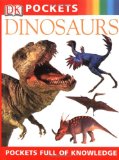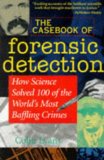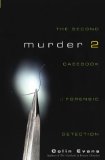Read More Books
Nov 27
In case you missed it, there was a FNN news story published earlier today. FNN stands for Fake News Network …
Happy Black Friday. We’re delaying Fiction Friday this week, but will have a special two-part story on Saturday and Sunday. Today, however, we make a blatant attempt to get you to buy more stuff.
Yep, it’s your conscience telling you to read more often! In the spirit of the Thanksgiving season, one thing that I am thankful for is the written works of my favorite authors. How different my life would be without the pleasure of reading. Winter is a great time to catch up on reading, since the weather sucks.
You’re looking for suggestions on some good books to read? Well, you’ve come to the right place. I’ll not only recommend some books to read, I’ll recommend a baker’s dozen of my favorite authors. (Note: all of the links are Amazon affiliate links – which means I will get a small commission if you buy something.)
Yes, the authors are listed in order of preference. You might noticed that there are no women on the list. Fear not, I do not exclude female authors from my reading list. Patricia Cornwell and Sue Grafton would probably be #14 and #15, but I had to stop somewhere. There is a decent dropoff between this group of 13 and the next dozen authors that I follow, so I stopped at #13.
1. Lawrence Block – Lawrence Block is my hero. That’s really what it boils down to. From the moment I read his first book, he has ranked among my favorite authors. I particularly enjoy the comedic Burglar series and the hard boiled Scudder books. I profiled Block several months ago, so I won’t rehash the details.
2. Michael Crichton – Michael Crichton left us far too soon. Crichton is best known for Jurassic Park and the television show ER, but there are plenty of treasures amongst his works – Timeline, Sphere, Congo, Prey – the list goes on.
3. Jeffery Deaver – I was introduced to Jeffery Deaver by the movie The Bone Collector. You might not know this, by Deaver has an entire series of books related to Lincoln Rhyme (the character played by Denzel Washington).
4. Dan Brown – I have devoted quite a bit of digital ink to Dan Brown, reviewing The Lost Symbol, as well as his other works. Whether you like him or not, he tells an interesting tale.
5. John Sandford – There a local connection to John Sandford. Sandford is the pen name of Pulitzer prize winning writer John Camp, who hails from Cedar Rapids, Iowa originally. Sandford’s fictional detective Lucas Davenport works in various capacities for the Minneapolis police or the state of Minnesota over the course of the “Prey” novels. Davenport is well off financially because of a software company he owned, which is a cool twist. One of Davenport’s friends is Dell Capslock … whose name was taken off a computer keyboard.
6. William X. Kienzle – Kienzle is himself a former priest, and he writes about a priest (Father Koesler) who solves crimes. The books delve a bit into the inner workings of the church as well as some theology, but in a non-preaching way. As a Catholic myself, I find this background information interesting. Note: I’m linking to the search results for him instead of the main author page, because the author page is missing the vast majority of his books!
7. John Grisham – I’ve fallen toward the outer edge of the Grisham bandwagon in recent years, as he has started to write fewer legal thrillers and more books of other types. When he does publish a new lawyer book, I’m always first in line. The master hasn’t lost his touch; he simply decided to go some new directions.
8. Michael Connelly – I never really intended to become a big fan of Connelly. I’d just read the occasional book here and there. One day, I glanced at the list of his books and realized that i had really nearly 20 of his books! In addition to the Harry Bosch detective novels, Connelly is the author of Blood Work, which was turned into a Clint Eastwood film..
9. Nelson Demille – One of my favorite books of all time is The Lion’s Game. Most of DeMille’s books deal with international incidents and/or the military. In addition to The Lion’s Game, I strongly recommend Up Country, Charm School, and The General’s Daughter (which was turned into a movie starring John Travolta).
10. Douglas Preston and 11. Lincoln Child
– it’s unusual enough to see a successful writing duo, much less one whose members also achieve success as solo authors. Together, they write books about FBI agent Pendergast. Among their solo efforts, I recommend Preston’s The Codex and Child’s Utopia. The Codex reminds me a bit of Grisham’s The Testament.
12. Ed McBain – McBain is our lens into the inner workings of a police department – in this case, the 87th precinct in New York City. Detective Steve Carella stars as the good guy in the series, but there are some negative cop characters, too – most notable, Fat Ollie Weeks from the neighboring 88th precinct.
13. John D. MacDonald – MacDonald’s hero, Travis McGee, takes his retirement in installments, rather than waiting until he is older. McGee lives on a houseboat (The Busted Flush, which he won in a poker game) and helps friends out of trouble every once in a while.
 RSS
RSS















